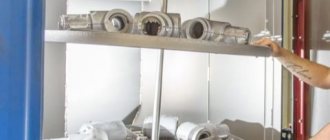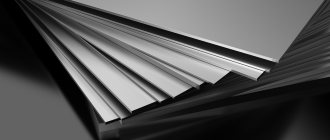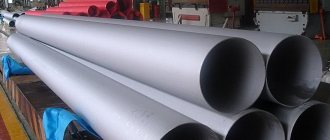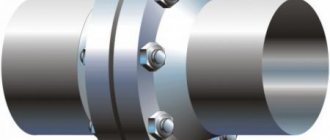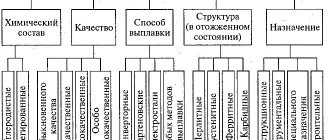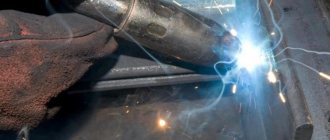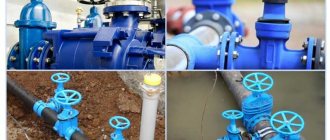The importance of steel in global industry
Metallurgy - steel production
The global steel industry is one of the most developed branches of metallurgy. Despite the recent decline in production due to the financial crisis of 2012, steel casting has received a new impetus and is now rapidly gaining momentum. The annual demand for this method is steadily increasing due to trends towards urbanization and industrialization. The main buyers of steel products are countries with well-developed infrastructure and industry. Steel production in the world accounts for about 90% of the volume of all metals.
Steel is widely used in the construction of roads, buildings and infrastructure: the largest stadiums, airports and bridges usually have a steel skeleton. Bolts, nails and screws are also made by casting steel into special molds. Despite the growing share of aluminum in the world market, steel casting will not lose its position for a long time. At the same time, steel production is characterized by cyclicality and, consequently, relative instability.
Properties of steel
Any grade of steel is based on carbon and iron. The amount of the former varies within 0.1–2.14%. The higher its concentration, the better the quality of the material. If the carbon concentration is greater than 0.6%, the melt is high-carbon. When the carbon content is greater than 2.14, the material is considered cast iron.
When a metal is melted, alloying components are added to it, which changes the mechanical characteristics of the melt. These include: tungsten, cobalt, vanadium and others.
Chromium is considered an important component in the alloyed melt. When its concentration is more than 12%, the steel receives anti-corrosion parameters. Its name is stainless steel.
When making steel, it is impossible to get rid of all impurities; some still remain, for example: silicon, phosphorus, manganese. Because of them, the quality of the melt becomes worse. The concentration of impurities must be kept to a minimum.
An important parameter of the melt is the temperature range of its melting - 1350-1521 degrees. Carbon and alloying elements influence the increase in this value. It is necessary to know the exact temperature values, since heating must be carried out 100–150 degrees more than permissible.
Characteristics of steel
Characteristics of steel
Steel owes its appearance to iron - it is an alloy of iron (Fe) with a certain carbon content (C). The proportion of the latter in the mixture should vary from 0.1 to 2.14%. Moreover, alloys containing more than 0.6% carbon in their composition are called “high-carbon.” Such materials are particularly durable, since carbon gives steel hardness and reduces its ductility. If the carbon content exceeds 2.14%, then the material is classified as cast iron.
During the steel casting process, so-called alloying elements (tungsten, vanadium, manganese, chromium, titanium, cobalt and others) can be added to the alloy. This procedure is aimed at giving the final material the desired properties, such as strength, ductility, workability, etc. At the same time, the mass fraction of iron content must remain at least 45%.
Regardless of the method of producing steel, the material contains small amounts of impurities of manganese, phosphorus, sulfur and silicon. These elements can negatively affect human health, so steel is not a highly environmentally friendly material.
Technologies used for steel casting
Steel castings produced at ZSM Mayak CJSC are produced using standard, high-quality technologies that make it possible to obtain finished steel products of almost any serial quantity, complexity and only high quality. Technologies used at the plant:
Steel casting in sand-clay mixtures
- Dimensional accuracy class according to GOST R 53464-2009: 9-14;
- Surface roughness of the resulting castings according to GOST 2789-73 Ra = 80 - 100 microns;
- The minimum wall thickness in products is 3 mm;
- The mass of the resulting castings ranges from 0.5 kg to 25 tons.
Steel casting in cold-hardening mixtures (CHS), liquid glass mixtures (LCS)
- Dimensional accuracy class according to GOST R 53464-2009: 8-13;
- Surface roughness of the resulting castings according to GOST 2789-73 Ra = 40 - 100 microns;
- The minimum wall thickness of manufactured products is 3 mm;
- The mass of the resulting castings ranges from 0.5 kg to 25 tons.
Type of steel
There are several generally accepted classifications of steel casting depending on the evaluation criterion. According to the quality and method of production, steel is divided into:
- ordinary quality;
- quality;
- improved quality;
- high quality.
Attitude to a particular category is determined by the percentage of the above-mentioned harmful impurities and compliance with technological and mechanical characteristics. Each type has its own scope of application. According to their chemical composition, steel alloys are divided into:
- Carbon, designed for static loads. Internally, the group is divided into low-, medium- and high-carbon steel.
- Alloyed, containing additional elements that affect the physical properties of the material.
Characteristics of our foundry
- The following models of melting furnaces are installed in the workshops: IST 25 – 2 pcs, IST 15 – 1 pc, DSP-3M – 2 pcs, IST 1.5 – 2 pcs, IST 0.75 – 2 pcs;
- The area of the plant's foundry shop is 18,000 m2;
- Plant production capacity – 24,000 tons/year;
- Installed lines for machine molding of products with flask sizes – 1050×600×300 mm, 850×680×300 mm, 1050×800×300 mm, 1200×1600×450 mm;
- Manual parade ground: 2,000 m2;
- Installed annealing furnaces: Loading 25 tons. Working size: B=2500 mm, H=1850 mm, L=5500 mm – 2 pcs.;
- Loading 100 t. Working size: B=7000 mm, H=7000 mm, L= 14000 mm – 2 pcs;
- Model equipment – from 3 days
- X-ray;
Classification
In addition, there is a classification according to the method of using steel:
Steel classification
- Construction - an ordinary material with good weldability.
- Structural – characterized by a high carbon content, suitable for frames, roofing, and rail manufacturing.
- Instrumental – used for cutting tools (cutter, chisel, chisel, drill, file, etc.).
- Alloyed - a universal mixture with a special admixture. Subtype – low-alloy steel for harsh climatic conditions.
- Special purpose steel is used in precision shipbuilding and electrical engineering.
Weldability is another important criterion for steel casting, which became the basis for dividing alloys into groups. This property is determined by the ability to deoxidize:
- Calm - completely deoxidized, contain a minimal amount of non-metallic impurities.
- Semi-calm, similar in quality to calm.
- Boiling steels are non-oxidized steels with a high percentage of non-metallic components.
For convenience, a special marking was introduced, which allows you to determine what type a particular alloy belongs to and what basic characteristics it has. It is important to remember that there is no global system, and each country has its own. Thus, on the territory of Russia it is customary to adhere to numerical and alphabetic designations.
Used steel alloys and cost of castings
- Carbon steels: 15L, 20L, 25L, 35L, 45L, 55L from 132 RUR/kg;
- Low-alloy steels: 20GL, 45GL, 40ХЛ, 70ХЛ, 20ГСЛ from 134 r/kg, 30ХМЛ, 35ХГСЛ from 148 r/kg, 30ХНМЛ from 182 r/kg, 14ХГ2НМЛ from 198 r/kg, 30ХМФЛ from 168 r/kg g, 15Х1М1ФЛ from 240 r/kg, 08GDNFL from 290 r/kg, 12DHN1MFL from 310 r/kg, 23ХГС2МФЛ from 320 r/kg, 30Х3С3ГМЛ from 360 r/kg, etc.;
- Alloy steels: 20Х5МЛ from 230 RUR/kg, 20Х13Л from 250 RUR/kg, 12Х17Л from 280 RUR/kg, etc.;
- Heat-resistant steels: 12Х18Н9ТЛ, 30Х23Н7СЛ from 320 RUR/kg, 40Х24Н12СЛ from 360 RUR/kg, 20Х20Н14С2Л from 360 RUR/kg, 20Х25Н19С2Л from 460 RUR/kg, 35Х18Н24С2Л from 510 RUR/kg , 12Х18Н12М3ТЛ from 570r/kg, etc.;
- Wear-resistant steels: 110G18L, 110G13Kh2L, 110G13KhBRL, 110G13FTL, 110G13L from 142 RUR/kg; 45X6NMFL, 150X12NMFL from 210r/kg.
*** Prices are indicated for 1 kg of castings including VAT
Where are the products used?
Products produced by steel casting are widely used in many areas. The popularity of the product is due to the fact that it not only has excellent technical characteristics, but is also a preferable option from an economic point of view. Thus, cast steel products are in demand in the following industries:
- mining industry;
- mechanical engineering;
- wood processing industry;
- metallurgy and petrochemical industry;
- aircraft and shipbuilding;
- production of machines and equipment for industrial use;
- production of equipment and devices intended for household use.
Where to order steel castings?
CJSC Special Machine Building Plant Mayak is ready to offer customers the production of steel castings according to customer drawings. Thanks to the plant's specialization in the production of cast products from various materials (steel, cast iron, copper, etc.), a high level of quality of the products is guaranteed. Among the advantages of cooperation with ZAO Special Machine Building Plant Mayak:
- availability of a full production cycle: tooling, casting, machining;
- high performance;
- modern high-tech equipment;
- automation of foundry technology design using ProCast, LVMFlow programs;
- wide range of used alloys;
- a large fleet of flask equipment for large castings of various configurations;
- own design department and certified laboratory;
- optimal ratio of product quality and price: 35L in xts - from 138r/kg
We produce cast products of any level of complexity. The order is completed as quickly as possible.
Basic steel casting processes and technologies
With the development of industry, the demand for a material more resistant to external influences increased, and man was faced with the task of creating it, having in his arsenal only scientific guesses and equipment that left much to be desired. Thanks to the inquisitiveness of scientists, many methods of steel smelting have been developed. The process consists of several stages.
Fuse
Steel melting device
Several centuries have passed since the discovery of steel as a building element, during which many casting methods were patented and implemented. Recently, it began to melt mainly in several ways. Most of them are united by belonging to electric smelting methods of metal processing. Electric furnaces are the best units available today, allowing you to melt the mixture quickly and efficiently by precisely adjusting the melting and pouring temperatures.
The first method is electric arc furnaces. An electric arc with an operating voltage of up to 600 V and a current of up to 10 kA is used as a heat source. The arc length is adjustable, and the furnace is equipped with a refractory casing and a working window to control the melting process. The capacity of the arc furnace can reach 400 tons.
The second popular method of steel processing is induction electric furnaces. These units are divided into designs with and without a core. The first group is low frequency furnaces, which consist of a shaft and channels covering the core and primary winding of the transformer (inductor). Liquid metal poured into the channel provokes the creation of a secondary coil with a powerful electric current, whose energy is transformed into heat. The material heats up quickly, which significantly saves raw materials and energy. An additional advantage of the unit is that there is no need to clean the channels after the previous casting.
Oxygen-converter method of steel melting
Tool alloy steel GOST 5950-2000
Alloy steel is steel into which, during the alloying process, special elements are introduced in certain quantities to provide the required properties. Such elements are called alloying elements. They can increase the strength and corrosion resistance of steel and reduce the risk of brittle fracture.
Alloying of steel can be carried out at various stages of metal production and consists of introducing alloying elements into the melt or charge. During the alloying process of steel, the introduced elements can form special chemical compounds with the steel base. Such intermetallic, carbide and nitride elements have high hardness and strength, chemical resistance, heat resistance, etc. Uniform distribution throughout the entire volume of the solid solution and a sufficient amount of these elements in the steel give the metal the necessary properties when alloying steel.
The following chemical elements are used to alloy steel: manganese (Mn) - G; silicon (Si) - C; chromium (Cr) - X; nickel (Ni) - H; copper (Cu) - D; nitrogen (N) - A; vanadium (V) - F; niobium (Nb) - B; tungsten (W) - B; selenium (Se) - E; cobalt (Co) - K; beryllium (Be) - L; molybdenum (Mo) - M; boron (B) - P; titanium (Ti) - T; aluminum (Al) - Yu.
Pure metal elements are not usually used when alloying steel. More often, ferroalloys (iron alloys) and alloys (auxiliary alloys) are used for alloying steel. This is more economical and allows one to avoid a number of technological difficulties in the process of steel alloying.
GOST 5950-2000 regulates the standards for the production of rods, strips and coils of hot-rolled, forged, calibrated and with special surface finishing from tool alloy steel, as well as the standards of chemical composition for steel 3Х2МNF, 4ХМНФС, 9ХФМ, ingots, billets, strips, pipes, forgings and other metal products.
Classification of alloy steels
By the number of alloying elements:
- highly alloyed - the total mass of alloying elements is more than 10%;
- medium alloyed - the total mass of alloying elements is more than 2.5-10%;
- low-alloy - the total mass of alloying elements is up to 2.5%.
By purpose:
- I - for the manufacture of tools used for processing metals and other materials in a cold state;
- II - for the manufacture of tools used for metal forming at temperatures above 300°C.
According to the method of further processing:
- a - hot-rolled and forged metal products for hot forming and cold drawing without control of structural characteristics;
- b - hot-rolled and forged metal products for cold machining with a full range of tests.
By quality of workmanship:
- regular;
- high quality - A.
By quality and surface finish:
- hot-rolled and forged: 2GP - for subgroup "a", 3GP - for subgroup "b" of improved quality, 4GP - for subgroup "b" of ordinary quality;
- calibrated - B and C;
- with special surface finishing - B, D, D.
By manufacturer:
- — EI;
- Zlatoust Metallurgical Plant - ZI.
Alloy tool steel grades
Grades of tool alloy steel of group I: 13Х, 8ХФ, 9ХФ, 11ХФ (IH), 9ХФМ, Х, 9Х1, 12Х1 (120Х, EP430), 6ХС, 9Г2Ф, 9ХВГ, 6ХВГ, 9ХС, В2Ф, ХГС, 4ХС, ХВСГФ, ХВГ , 6ХВ2С, 5ХВ2СФ, 6ХЗМФS (EP788), 7ХГ2ВМФ, 9Х5ВФ, 8Х6НФТ (85Х6НФТ), 6Х4М2ФС (DI55), Х6ВФ, 8Х4В2МФС2 (EP761), 11Х4В2МФ3° C2 (DI37), 6Х6В3МФ S (EP569, 55Х6В3СМФ), Х12, Х12МФ, Х12Ф1 , X12VMF.
Grades of tool alloy steel of group II: 5ХНМ, 5ХНВ, 5ХНВС, 7Х3, 8Х3, 4ХМФС (40ХСМФ), 4ХМНФС, 3Х2МNF, 5Х2МНФ (DI32), 4Х3ВМФ (3И2), 3Х3М3Ф, 4Х5 МФС, 4Х4ВМФС (DI22), 4 H5MF1S (EP572) , 4X5V2FS (EI958), 4X2V5MF (EI959), X3V3MFS (DI23), 05X12N6D2MFSGT (DI80).
Designation of the steel grade: the first numbers are the mass fraction of carbon in tenths of a percent, then the letters are the substance used as an alloying element, the numbers after the letters are the average mass fraction of the corresponding alloying element in whole units of percent. The initial figure is omitted if the carbon content is at least 1%. The letter “A”, in the middle of the steel grade is the nitrogen content, at the end is high-quality steel. For example, steel 5ХНМ - 0.5 C, 1 Cr, 1 N1, up to 0.3 Mo.
Non-standard alloy steels produced, for example, are designated by the appropriate combination of letters (in this case “EI”), followed by the serial number of the steel. For example, EI959, EP761, DI80, etc.
Application of tool alloy steel
| steel grade | Application area |
| X12MF | Parts for working under pressure of about 1400-1600 MPa. Profiling rollers of complex shapes, standard gears, rolling dies, sections of forging dies, complex punching dies and punches of cutting and perforating dies, punches and dies of cold extrusion for high pressures. Not applicable for welded structures. |
| 4-9ХС, ХВГ | Critical parts with increased wear resistance, bending fatigue strength, contact loading, and elastic properties. Drills, reamers, taps, dies, combs, cutters, machine dies, stamps for cold work. Not applicable for welded structures. |
| 4Х5МФС | Small hammer dies, large hammer and press inserts for hot deformation of structural steels and non-ferrous alloys in large-scale and mass production, injection molds for aluminum, zinc and magnesium alloys. |
| 3Х3М3Ф | Tools for hot deformation on crank presses and horizontal forging machines that undergo intense cooling during operation (usually for small tools), injection molds for copper alloys, knives for hot cutting. |
| R6M5, R6M5K5, R6M5F3, R6M5K8, R18, R7M2F6, R12MF5, R9M4K8, R10M4K14, R12M3K5F2, R12M3K8F2, R12M3K10F2, R12M3K10F2 | Disc cutters, reaming drills, countersinks, taps, broaches; worm cutters, end cutters, disk cutters; Shavers. |
Additional Methods
Induction oven
Coreless induction furnaces are air transformers, the operating principle of which is based on the absorption of released electromagnetic energy by a charge (metal raw material) loaded into a crucible. Furnaces of this type are divided into industrial frequency equipment (50 Hz) and high frequency equipment (more than 500 Hz).
Electricity allows you to quickly heat the mold, so it is advantageous to produce alloy steel in the above units. However, methods such as oxygen-converter and open-hearth processes are no less popular.
The oxygen-converter method involves casting steel from cast iron by oxidizing its impurities by blowing oxygen. The system is characterized by simplicity and high production speed. The temperature in the chamber is maintained by the oxidation process itself, usually around 1600 °C.
The open-hearth process has deep roots in history - only in 1864 it was possible to achieve the temperature indicators necessary for the operation of chemical reactions. Nevertheless, due to the relative ease of implementation, the method is still widely used today.
Internally, the smelting process is also traditionally divided into 3 main stages:
- Heating the charge and melting it.
- “Boiling” the bath - heating to maximum temperatures for intense oxidation.
- Deoxidation - at the same stage, if necessary, alloying is carried out.
Diagram of an induction furnace with a steel core
Rating of tool steels for wear resistance, toughness and heat resistance
The most important properties of tool steels are wear resistance, toughness and heat resistance. Table 2 shows the ratings of these three basic properties for each of the steels listed in Table 1. This rating is a number from 1 to 10, with 10 being the highest rating.
Table 2 – Rating of wear resistance, toughness and heat resistance of tool steels
In general, the main “levers” for achieving a high level of the three main properties of tool steels come down to the following: 1) higher wear resistance - more carbides; 2) higher viscosity – lower carbon content; 3) higher heat resistance - more alloyed carbides.
Alloy casting
Once the inside of the furnace or chamber has been heated, melted and transformed into a steel alloy, it must be cast into molds. This happens thanks to the so-called gating system. It is a set of channels and reservoirs for supplying metal to a casting mold.
There are different types of molds for casting steel, the most common of which are:
Features of the production technology of shaped castings from aluminum alloys
- sand molds for casting are disposable, made from a mixture of quartz sand, refractory clay and coal dust with sawdust;
- shell molds for casting – ensure hermetic accuracy, automate the production of casting, the ingots are less rough;
- lost wax molds for casting – used for the manufacture of high-precision parts of any complexity.
Each type of casting mold has both advantages and a number of disadvantages, so the choice in favor of one or another method is made taking into account the specifics of the production of a particular product. Thus, sand molds are cheap, but of poor quality, while steel casting using lost wax models guarantees high accuracy, but does not always justify the high cost.
The most economical method of casting steel ingots was developed, called “continuous” - the resulting alloy from the ladle enters an intermediate casting mold, and from there into a copper crystallizer, where it begins to slowly solidify. At the exit, the ingot is captured by special pulling rollers and additionally cooled with water. The speed of drawing steel from the mold is about 1 m/min, after which the resulting profile is cut into pieces of the required size using an oxy-acetylene blade.
Casting Casting Machine
Steel casting methods
Casting is carried out using several procedures. This material processing technology includes the following procedures:
- Melting of the charge;
- Boiling;
- Further deoxidation of non-metallic components;
- Fuse.
Melting can be done even at home. A graphite crucible is used for this. Fire-resistant brick is used as a base.
The procedure for creating a furnace is as follows:
- Two copper bars are mounted at a small distance from each other, which are fixed to the brick with bolts. A metal plate is laid under them in advance, one part of which is bent.
- A transformer is connected to the buses.
- A crucible is installed on a metal plate in which the material will be melted.
- The curved part of the plate touches the crucible.
The essence of the procedure is that graphite is not capable of conducting electricity, so when current passes, it heats up significantly. Due to this, the material melts.
Additional technologies
The following casting methods are available:
- Martenovsky. Characterized by convenience and ease.
- Oxygen converter. Based on the production of metal castings. The procedure of oxidation of impurities is carried out due to the supply of oxygen. The temperature in the chamber is 1600 degrees.
At the end of the procedure, the steel alloy is poured into molds. For this purpose, there is a gating system, which is channels leading to molds intended for casting.
Metal ingots are created using a continuous manufacturing method. The metal alloy enters the crystallizer. There it becomes harder, and then it is taken out and stretched with rollers. To quickly cool it, water it with water. At the final stage, it is cut into measured pieces.
Classification and marking of cast steels.
| TOP 10: | Cast steels include iron-carbon alloys containing up to 2.14% C and other elements (Mn, Si, P, S, Cr, Ni, W, Mo, V, etc.) that got into the steel from charge materials or were specially introduced into it in certain quantities to give the alloy the necessary operational and technological properties. Steel castings rank second in terms of production volume after cast iron and are used in all branches of mechanical engineering. Made from steel parts that are subject to increased strength requirements, ductility, reliability and durability during operation. In mechanical engineering, for the manufacture of steel shaped castings in accordance with GOST 977 and GOST 7832, three groups of casting steels are used: unalloyed (carbon), | Characteristic |
| 1 | 2 | 3 |
| Structural unalloyed | 15L, 20L, 25L, ZOL, 35L, 40L, 45L, 50L | |
| Structural alloyed | 20GL, 35GL, 20GSL, ZOGSL, 20PFL, 20FL, ZOHGSFL, 45FL, 32H06L, 40HL, 20HML, 20HMFL, 20GNMFL, 35HML, 30Х-NML, 35HGSL, 35NGML, 20 DHL, 08GDNFL, 13HNDFTL, 12DN2FL, 12DH-N1MFL,23HGS2MFL, 12Kh7GZSL, 25Kh2GNM-FL, 27Kh5GSML, 30KhZSZGML, 03N12Kh5M-ZTL, 03N12Kh5MZTYUL | |
| Alloyed with special properties: | ||
| martensitic class | 20X13L, 08X14NDL, 09X16N4BL, 09X17NZSL, 10X12NDL | Corrosion resistant |
| 20Х5МЛ, 20Х8ВЛ, 40Х9С2Л | Heat resistant | |
| 20Х12ВНМФЛ | Heat resistant | |
| 85Х4М5Ф2В6Л (Р6М5Л) | High speed | |
| martensitic-ferritic class | 15Х13Л | Corrosion resistant |
| ferritic class | 15X24TL | Corrosion resistant |
| austenitic-martensitic class | 08Х15Н4ДМЛ, 08Х14Н7МЛ, 14Х18Н4Г4Л | Corrosion resistant |
| austenitic-ferritic class | 12Х25Н5ТМФЛ, 16Х18Н12С4ТУЛ, 10Х18НЗГЗД2Л | Corrosion resistant |
| austenitic class | 10Х18Н9Л, 12Х18Н9ТЛ, 10Х18Н11БЛ, 07Х17Н16ТЛ, 12Х18Н12МЗТЛ | Corrosion resistant |
| 55Х18Г14С2ТЛ, 15Х23Н18Л, 20Х25Н19С2Л, 18Х25Н19СЛ, 45Х17Г1ЗНЗУЛ | Heat resistant | |
| 35Х18Н24С2Л, 31Х19Н9МВБТЛ, 12Х18Н12БЛ, 08Х17Н34Б5ТЗУ2РЛ, 15Х18Н22В6М2RL, 20Х21Н46В8RL | Heat resistant | |
| 11OG1ZL, 110G13H2BRL, 11OG1ZFTL | Wear-resistant |
Carbon non-alloy steels are most widely used for castings.
(about 2/3 of all steel castings), their standard grades are designated by the letter
L
(foundry) and a number indicating the average carbon content in hundredths of a percent;
for example, 15L
,
25L, Z0L, 45L, 50L, 55L,
etc. The number indicates the carbon content in hundredths of a percent, and the letter
L
indicates that it belongs to cast steels. These steels, as a rule, contain manganese in an amount of 0.3 ... 0.9% and silicon in an amount of 0.2 ... 0.52%. Chromium, nickel and copper are allowed in these steels in quantities of no more than 0.3% each. The sulfur and phosphorus content is limited to 0.45% and 0.04%, respectively. Increasing the carbon content in steel leads to increased strength and increased fluidity.
Carbon casting steels are usually used in a normalized, normalized and tempered state, in an improved state and after normalization, quenching and high tempering. In the latter case, normalization acts as a pre-heat treatment, the purpose of which is to prepare the cast structure for final heat treatment.
For the manufacture of castings, alloyed
and
alloy
steels with special properties (p. table). Castings made of alloy steels with special properties (corrosion resistance, heat resistance, heat resistance, wear resistance and cavitation resistance) must meet the requirements of GOST 2176-77.
Alloy casting steels are designated with numbers and letters similar to deformable structural steels, except that at the end of the casting grade there is the letter L instead of A, W, V, D. For example, steel 30KhGSL is similar to deformable steel 30KhGSA. For example, the designation of the grade of one of the structural steels 20Х13Л
: 0.20% carbon; 13% chromium; cast steel.
In the designations of grades of casting cold-resistant and wear-resistant steels used for machine parts and operated at temperatures down to -60 ° C, the letter C
.
For example, 15LS
-0.15% carbon;
30ХМЛС
: 0.30% carbon; chromium; molybdenum, etc. (GOST 21357-75).
The group of alloy cast steels includes manganese (for example, 35GL), manganese-silicon (for example, 20GSL), chromium (for example, 40KhL), chromium-nickel (for example, 35KhNL), chromium-manganese-silicon (for example, ZOKHNML), chromium-manganese-vanadium (for example, 23KhGS2MFL) and the so-called cuprous (for example, 08GDNFL and 12DN2FL), in which copper (D) is additionally specially introduced to ensure the effect of dispersion strengthening of steel.
For the convenience of choosing alloy casting steels in the manufacture of specific steel castings with a given level of mechanical properties, they are all divided into groups in accordance with the yield strength value s0.2 they provide, and are designated after normalization and tempering by the letter K
, and after hardening and tempering - with the letters
KT
.
In accordance with this, all alloy cast steels are divided into two groups:
steels providing strength categories K ranging from K-25 to K-55, and steel;
•steels that provide KT strength categories ranging from KT-35 to KT-120. Moreover, the same steels can be included in both of these groups. For example, steel 08GDNFL can provide strength categories K-30 and KT-40.
The indices ≪K≫ and ≪KT≫ are symbols of the category
strength, the number following them means the value of the required limit
fluidity (kg/mm2). The index ≪K≫ is assigned to the material in the annealed, normalized state; index ≪KT≫ – after hardening and tempering.
The exact chemical composition of steels is indicated in the tables of GOST 977–88.
It can be noted that in the foundry high-strength economically alloyed steels developed in the 80s, included in GOST 977 (for example, 15Х5ГСФЛ
,
23KhGS2MFL
,
25Kh212FL
,
17Kh5G5S2ML
and
30Kh3S3GML
, it was possible to obtain, along with a high level of strength properties, also high values of ductility and toughness, which are comparable with similar values of deformable steels.
Such unique properties were obtained in them by reducing the development of segregation processes by optimizing the composition:
1) reduction of carbon content;
2) a decrease in the number of elements that form persistent chemical compounds in the form of carbides and nitrides, which eliminate more strongly than others;
3) introducing elements into steel that reduce segregation (Ni, Si, etc.). High-alloy cast steels make it possible to switch to the production of many critical loaded parts from the forged stamped version to the cast one.
High-alloy cast steels presented in GOST 7832 include corrosion-resistant steels 20Х13Л, 10Х18Н9Л, 12Х18Н9ТЛ, etc., heat-resistant and heat-resistant steels 20Х20Н14С2Л, 20Х25Н19С2Л, 40Х24Н12СЛ, etc.; wear-resistant steel 110G13L.
To obtain high-quality steel castings, it is necessary to take into account the peculiarities of the casting properties of steels at the stage of designing the cast part and when developing the technology for its production. In casting technology, it is necessary to provide for the location of the casting in the mold and the supply of metal in such a way that the casting solidifies consistently. Accumulations of metal in the areas where the walls meet are unacceptable, so the casting must have smooth transitions from thick to thin areas or uniform wall thickness.
Control questions………………………………………………
Lecture 8
infopedia.su
Grades, carbon content and mechanical properties of cast carbon steels according to GOST 977-88
| Alloy grade | From, May. % | Mechanical properties, no less | ||||||
| Normalization + vacation | Hardening + tempering | |||||||
| N/mm2 | at, N/mm2 | 5,% | xi, kJ/m2 | N/mm2 | 5,% | |||
| 15L | 0,12… 0,20 | 400 | 200 | 24 | 0,50 | — | — | |
| 25L | 0,22…0,30 | 450 | 240 | 19 | 0,40 | 500 | 22 | |
| ANGRY | 0,27…0,35 | 480 | 260 | 17 | 0,35 | 500 | 17 | |
| 35L | 0,32…0,40 | 500 | 280 | 15 | 0,35 | 550 | 16 | |
| 45 L | 0,42…0,50 | 550 | 320 | 12 | 0,30 | 600 | 14 | |
| 55L | 0,52…0,60 | 600 | 350 | 10 | 0,25 | 860 | 15 | |
ferrite and is called “Widmanstedt”. It is almost certainly corrected by heat treatment - annealing, normalization, hardening or combinations thereof. As a result, equiaxed small ferrite and pearlite grains are formed. In addition, during the annealing process at 600...650°C, residual casting and emerging quenching stresses are simultaneously removed.
Features of casting properties of carbon steels.
The casting properties of carbon steels are much worse than the casting properties of cast iron and other alloys. The low fluidity of steels is explained mainly by the highest (except for titanium alloys) liquidus temperature and correspondingly low pouring temperature. The total volumetric shrinkage of solidification and shrinkage in the liquid state is 6.0%. Therefore, steel castings, like castings of all other alloys except cast iron, must be obtained at a profit. Steel castings are characterized by the development of porosity; hot cracks form in them more often than in castings from other alloys, even in cases of casting in sand-clay molds. At the same time, cold cracks in steel castings occur less frequently than in cast iron castings.
They are more prone to saturation with gases and non-metallic inclusions, but the requirements for them are higher than for cast iron. Steel castings with a wall thickness of more than 80 mm are prone to segregation, especially in sulfur and phosphorus. As a rule, ingots that are significantly thicker are subjected to segregation.
Cast carbon steels are less sensitive to changes in mechanical properties depending on wall thickness than other alloys, especially considering their mandatory heat treatment.
Alloy cast steels.
Alloying of cast carbon steels is carried out in order to increase the mechanical properties and acquire special service properties. Alloy steels include low- and medium-alloy steels with an alloying component content of up to 2.5 and from 2.5 to 10%, respectively.
The chemical composition of alloy steels in accordance with GOST 977-88 is given in table. 5.9, and their mechanical properties after heat treatment (hardening (normalization) and tempering) are in table. 5.10.
More often than others, steels alloyed with silicon, manganese, chromium and nickel, copper, etc. are used.
There are many known compositions of manganese steel, differing in the content of carbon and manganese. Usually their content ranges from 0.17...0.4% C and 1.0...2.0% Mn, respectively.
Manganese steels are distinguished by higher strength and especially greater hardenability than carbon steels. Manganese steels are widely used in the manufacture of castings for railway vehicles, excavators and other machines.
studfiles.net
